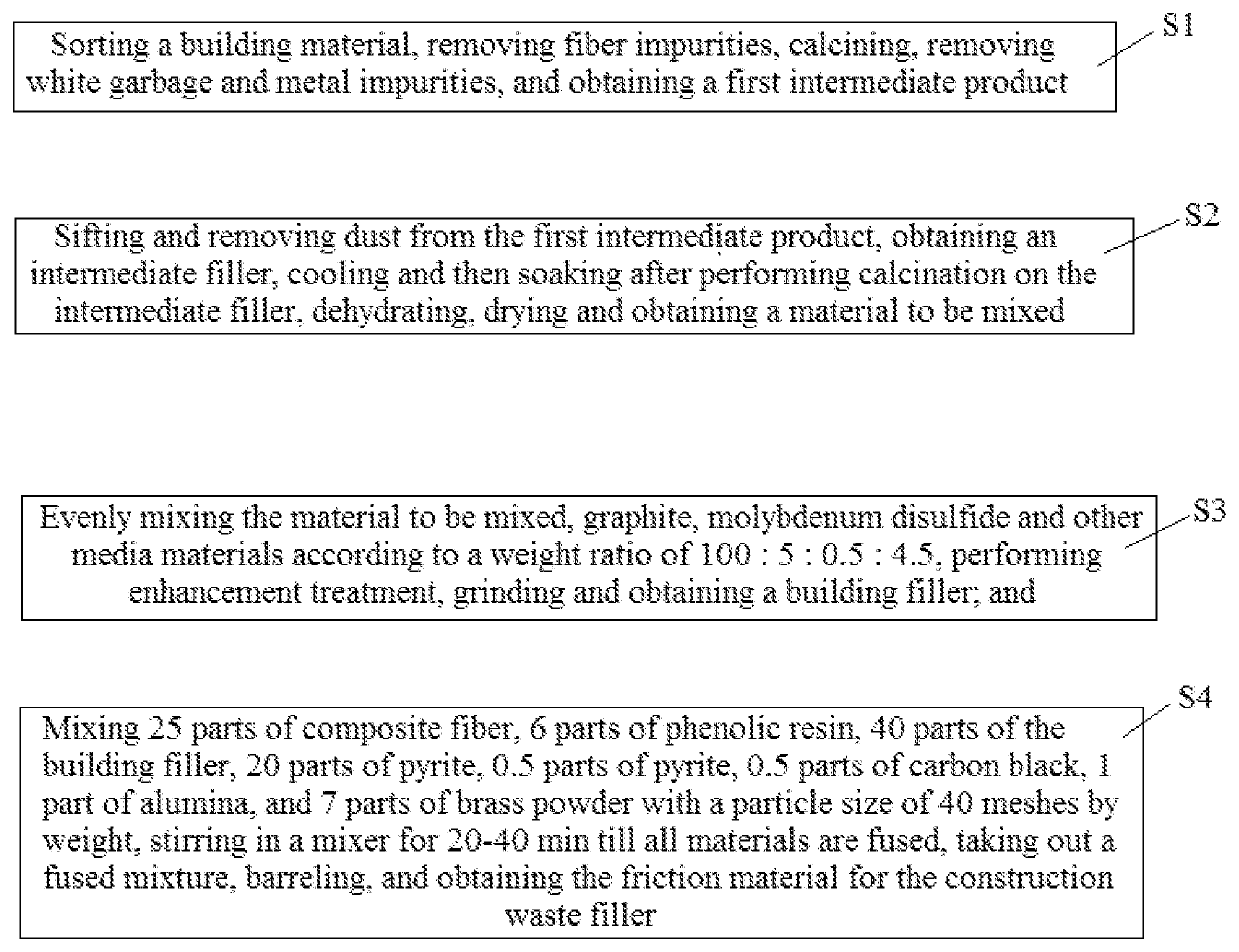Production technology of friction material for brake pad of construction waste filling material
a technology of construction waste and filling material, which is applied in the direction of friction lining, solid waste management, sustainable waste treatment, etc., can solve the problems of poor brake effect, achieve high temperature performance and stability, and facilitate the operation of brake pads
- Summary
- Abstract
- Description
- Claims
- Application Information
AI Technical Summary
Benefits of technology
Problems solved by technology
Method used
Image
Examples
Embodiment Construction
[0025]The invention will now be further described with reference to the accompanying drawings and specific embodiments.
[0026]Referring to the drawing, a process for producing a friction material for a construction waste filler according to a preferred embodiment of the present invention is illustrated.
[0027]The process comprises the steps of:
[0028]S1: sorting the building material to remove fiber impurities, performing calcination, removing white garbage and metal impurities, wherein:
[0029]the step of (S1) specifically includes:
[0030]removing the fiber impurities in the building material;
[0031]calcining the building material which is removed the fiber impurities in a calciner at a temperature in a range of 550 to 650 degrees Celsius to remove the white garbage and removing the metal impurities through magnetic absorption, wherein preferably, the temperature is controlled at 600 degrees Celsius; and
[0032]calcining after placing the building material which is removed the metal impurit...
PUM
| Property | Measurement | Unit |
|---|---|---|
| temperature | aaaaa | aaaaa |
| temperature | aaaaa | aaaaa |
| temperature | aaaaa | aaaaa |
Abstract
Description
Claims
Application Information
 Login to View More
Login to View More - R&D
- Intellectual Property
- Life Sciences
- Materials
- Tech Scout
- Unparalleled Data Quality
- Higher Quality Content
- 60% Fewer Hallucinations
Browse by: Latest US Patents, China's latest patents, Technical Efficacy Thesaurus, Application Domain, Technology Topic, Popular Technical Reports.
© 2025 PatSnap. All rights reserved.Legal|Privacy policy|Modern Slavery Act Transparency Statement|Sitemap|About US| Contact US: help@patsnap.com

